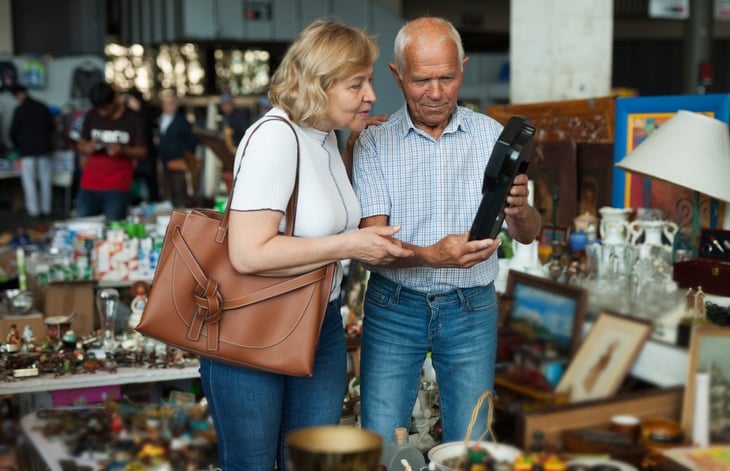
Summer is flea market season — the high holiday for everyone who loves the thrill of the hunt and discovering one-of-a-kind treasures. But navigating these unique resale environments isn’t for the faint of heart.
Most flea markets (referred to as “swap meets” in some parts of the country) are outside in the blazing heat. And some of the largest flea markets in the country cover several acres of land. To find the best bargains, you have to embrace the whole experience — and plan ahead.
As a professional picker and reseller for more than 30 years, I’ve learned a few flea market lessons the hard way. Here are my tips for shopping smart and driving away with a carload of fantastic finds.
1. Pack and prep
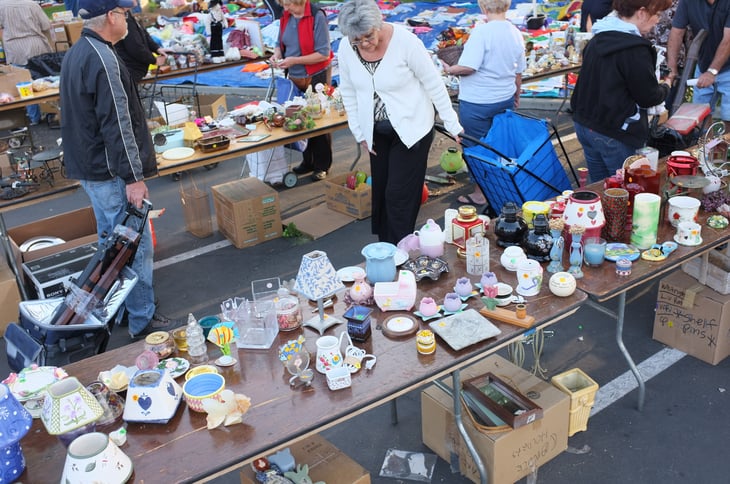
Pack as if you’re going on an day-long hike. First, suit up with comfortable shoes, a layer of sunscreen (30 SPF or higher) and your favorite pair of sunglasses. Next, make sure you’ve got the essentials. Here’s what I bring along to every flea market:
- Comfortable over-the-shoulder bag with wide handles or a collapsible wheeled cart
- Bottled water, two to three energy bars, and a few aspirin
- Shopping list with key measurements for furniture, picture frames, etc.
- Pocket-size tape measure
- Moving blankets and bungee cords to safely transport large items
- Umbrella
See also: 9 Tools Every Thrift Shopper Needs
2. Carry cash
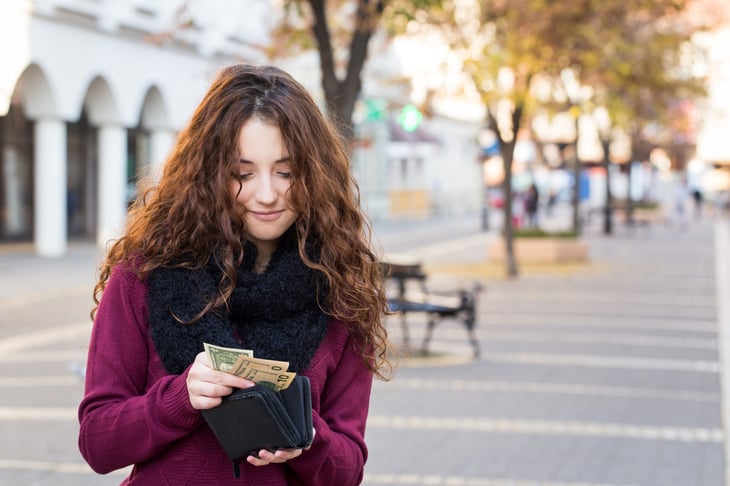
Mobile payment systems have gone mainstream, but don’t assume every flea market vendor will offer the option. In the world of secondhand shopping, pretend it’s 1990. Bring enough cash (small bills preferred) to cover everything on your shopping list plus a few “I just fell in love with it!” buys.
And don’t forget bargain hunters — money talks. Sellers are more likely to haggle on price when that money is green and foldable.
3. Arrive early
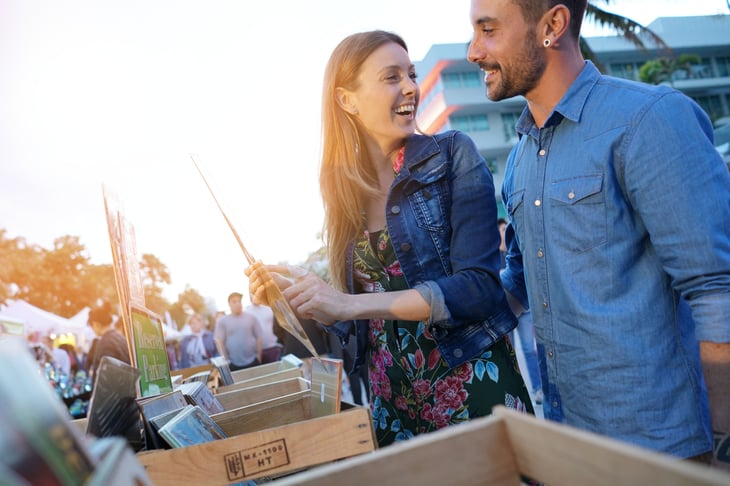
I love strolling through flea markets when there’s still dew on the grass. It’s usually cooler, far less crowded, and I don’t have to spend the first 20 minutes decompressing from parking hassles.
Even better, arriving early gives me a chance to see items first and score a few bargains before the competition shows up.
4. Remember where you parked
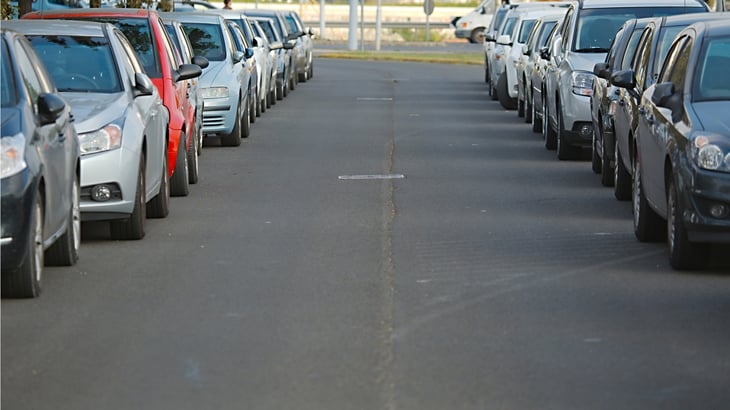
Some swap meets such as the Brimfield Antique Flea Market are so large that maps are required. By the end of the day, you’ll want only two things: to find your car and review your haul over dinner.
Remember where you parked by snapping a photo of the cross streets or lot number. Later in the day, your tired feet will thank you.
5. Haggle (respectfully)
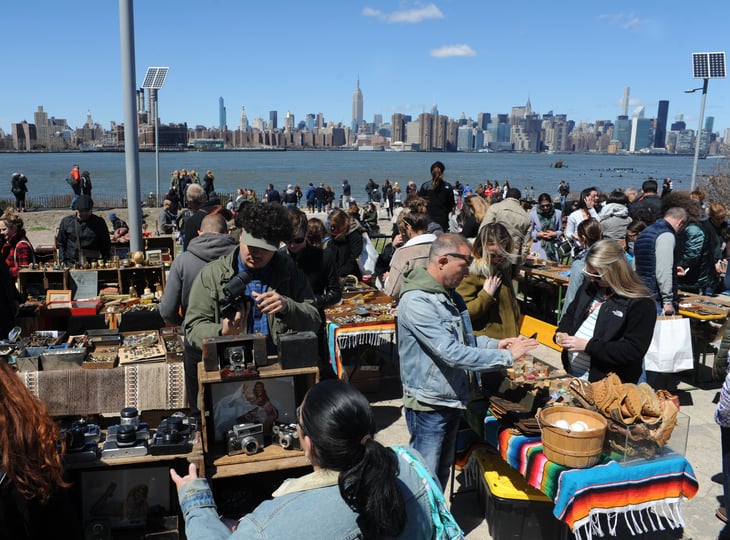
Most flea market vendors expect a bit of haggling. But if your negotiating skills are bit a rusty, keep three simple rules in mind.
- First, haggling is always more successful at the end of the day (or better, at the end of the day on the final day of the event)
- Second, be friendly! Haggling isn’t a wrestling match; it’s a low-stakes game of chess.
- And third, avoid alienating sellers by making a low-ball offer. Initial offers should be within 10%-20% of the marked price.
See also: 10 Tips for Negotiating a Better Price on Anything
6. Buy it when you see it
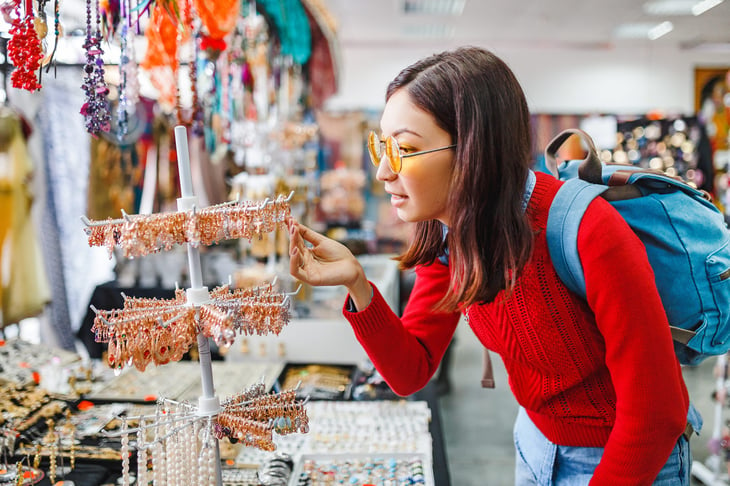
Exploring odd and eclectic inventory is what makes flea markets so much fun. But there’s a flip side: If you find something you absolutely love, buy it. It may not be around later in the day (and at large flea markets, it can be difficult to find your way back to a specific vendor).
7. Listen to the stories

Flea market vendors are an interesting bunch. They’re in constant search mode and love “rehoming” their finds with the right people. As you shop (and especially if you’re haggling), take some time to listen to their stories. Vendors are usually eager to discuss an item’s history, craftsmanship and special details.
This social component is a unique part of the secondhand economy. Embrace the excitement of being around like-minded people who are passionate about antiques and creative reuse.
8. Never interrupt a sale

This one takes a little practice. Vendors who appear to be having a casual conversation may actually be in the middle of a sale.
If you’re interested in an item, wait until there’s a break in conversation. Then offer a quick “hello,” and a friendly “let me know when you’re free.”





Add a Comment
Our Policy: We welcome relevant and respectful comments in order to foster healthy and informative discussions. All other comments may be removed. Comments with links are automatically held for moderation.